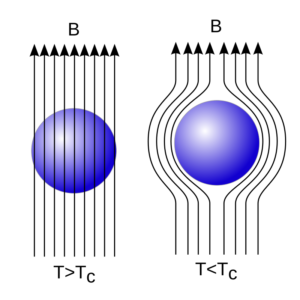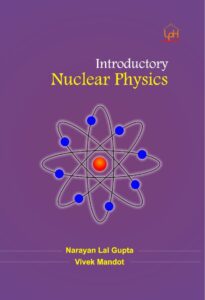Applications of uncertainty principle
- According to Heisenberg’s uncertainty principle it is impossible to determine precisely and simultaneously two canonically conjugate variables.
- If we measure one physical quantity precisely then the other will have a great uncertainty.
- This principle is observed only in microscopic particles, not in macroscopic bodies.
- In this article we will discuss about the following applications of uncertainty principle.
- Particle in a box
- Bohr’s orbit and principle of uncertainty
- Ground state energy of hydrogen atom
- Non-existence of electron in the nucleus
- Binding energy of an electron in an atom
- Photon emission from an excited atom
Δx × Δp ≥ ħ / 2
Particle in a box
- Let a particle of mass m be lie in a box having side a.
- Since the particle can be anywhere in the box, and therefore the maximum uncertainty of finding the particle in this box is Δx = a.
- From Heisenberg’s uncertainty principle
Δx × Δp ≈ ℏ
- Therefore the minimum uncertainty of momentum will be
- The minimum uncertainty of momentum of particle will be in the range of -ℏ/2a to ℏ/2a.
- Thus the minimum energy of particle will be
Bohr’s orbit and principle of uncertainty
- If ΔJ and Δφ are the uncertainty in angular momentum and the uncertainty in angular displacement of the particle then from uncertainty principle, we have
ΔJ × Δφ ≈ ℏ
- If electron revolve in first Bohr’s orbit then the uncertainty in its angular momentum will be 5% of ℏ
- Since the value of angle perpendicular to angular momentum can not be greater than 2π = 6.28 rad.
- So the position of electron in Bohr’s orbit is completely uncertain.
First Bohr radius
∵ Δx × Δp ≈ ℏ
∴ Δp ≈ ℏ / Δx
But Δx = r
∴ Δp ≈ ℏ / r
- Now, uncertainty in kinetic energy is
- And uncertainty in potential energy is
- Therefore the uncertainty in total energy is
ΔE = ΔK + ΔU
- Since in ground state energy is always minimum, therefore Emin =ΔE
- Thus the radius of first Bohr orbit of hydrogen atom is 0.53 Å, which is same as given by Bohr.
Ground state energy of hydrogen atom
- The minimum energy of electron is always in ground state
Emin = ΔE
- Since the radius of first Bohr orbit
- This energy is same as that obtained from Bohr model of hydrogen atom.
Non- existence of electron in nucleus
- The electron revolves around the nucleus in their fixed stable orbit, they never lie in nucleus.
- Let an electron be exist in atomic nucleus and radius of nucleus is of the order of 2 × 10-14 m
∴ (Δx)max ≈ 2 × 10-14
∵ Δx × Δp ≈ ℏ
- If minimum uncertainty in momentum of electron is 5.27 × 10-21 kg.m/s, then the momentum of electron should be
- From relativistic theory
- If an electron exists in the nucleus, it must have minimum energy of about 9.88 MeV, but the maximum K.E. with which a β-particle (electron) emitted from radioactive nuclei is about 2-3 MeV.
- So a free electron can’t be reside inside the nucleus.
Binding energy of an electron in an atom
- In hydrogen electron revolves around the nucleus in an orbit of radius about 0.5 Å.
∴ (Δx)max ≈ 5 × 10-11 m
- Thus binding energy of an electron in an atom is about 15 eV.
Photon emission from an excited atom
- The electron excited to higher energy level by absorbing energy and it comes back to ground by emitting the photon within 10 ns.
∴ Δt ≈ 10 × 10-9= 10-8s
∵ ΔE × Δt ≈ ℏ
- Therefore the uncertainty in frequency is
To know more about the applications of Heisenberg’s uncertainty principle click here for English and for bilingual (Hindi/English) click on click here for bilingual (Hindi/English)


